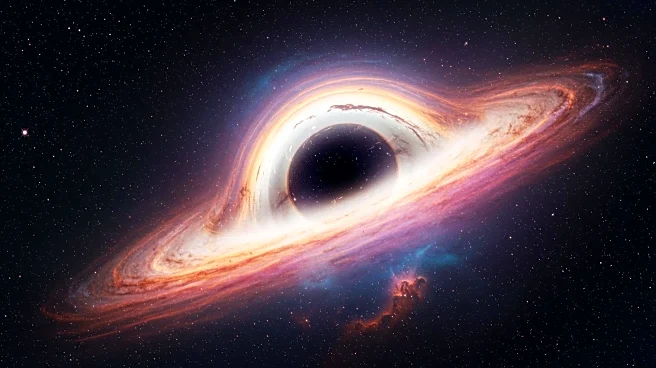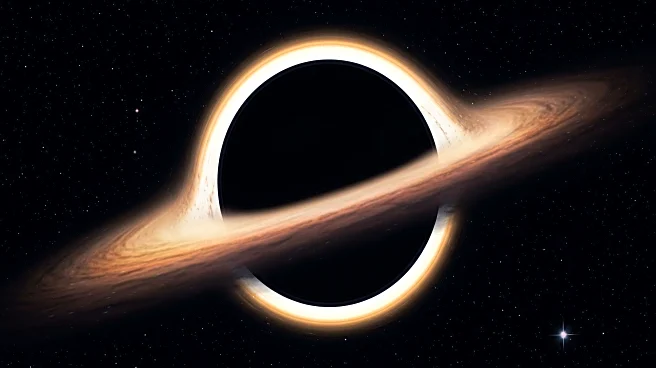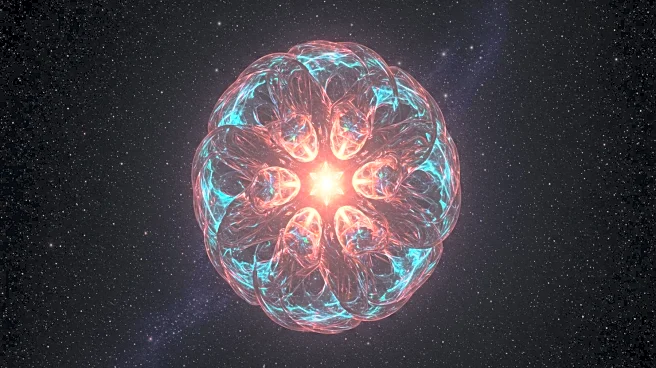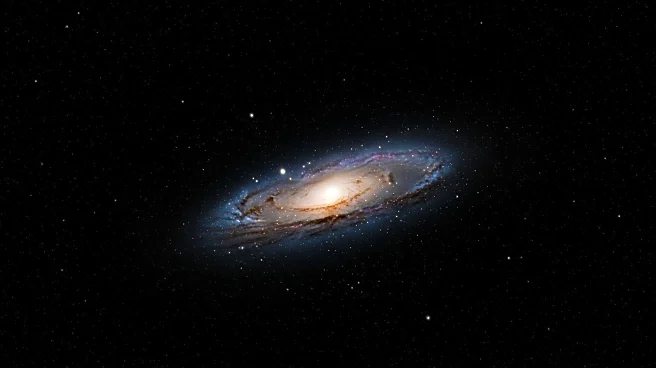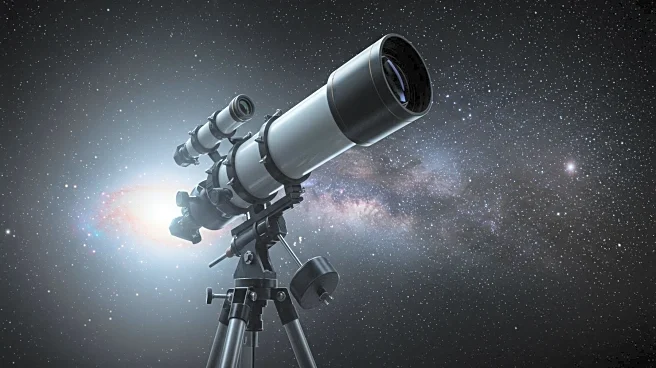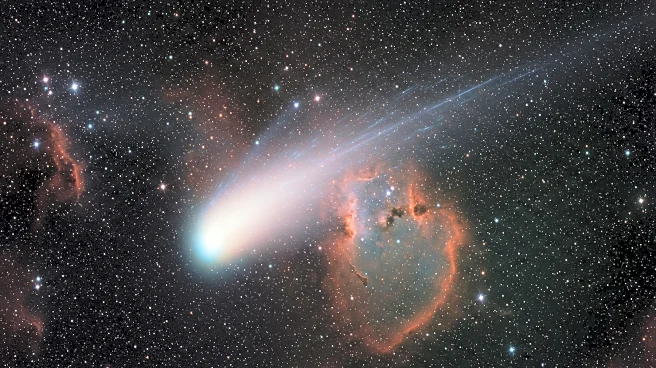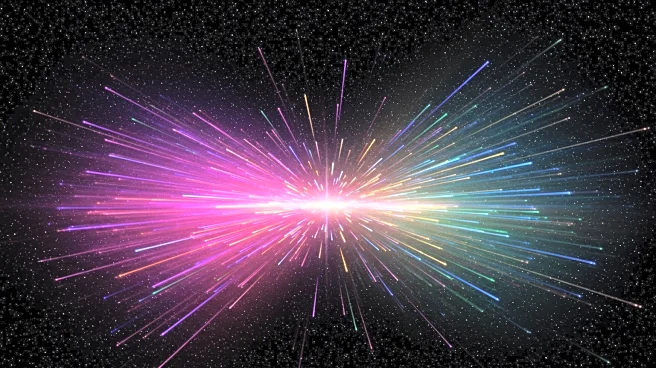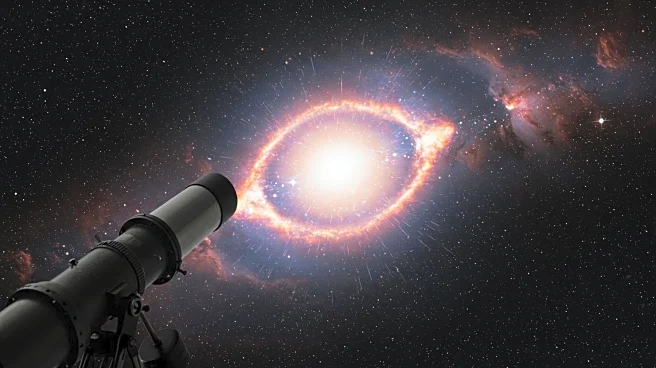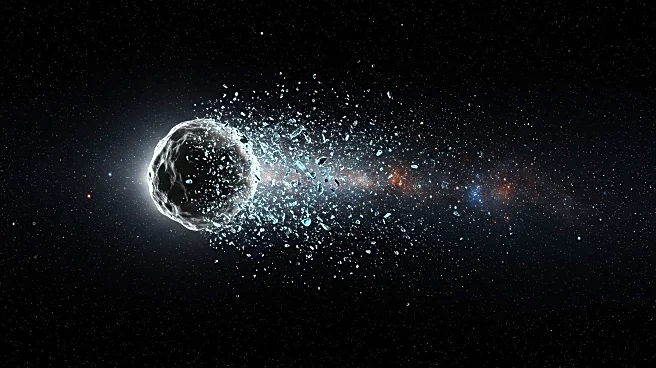What's Happening?
Astronomers have identified intermediate black holes, which are smaller than supermassive black holes but larger than stellar mass black holes. These 'lite intermediate black holes' range from a few hundred to a few hundred thousand times the mass of the Sun. A team of researchers, including Krystal and Karan, used gravitational wave data from the Laser Interferometer Gravitational-Wave Observatory (LIGO) to detect these elusive black holes merging. Their study analyzed 11 black hole merger candidates, finding five post-merger black holes likely in the intermediate mass range. This discovery suggests that the universe has mechanisms for creating black holes beyond stellar collapse.
Why It's Important?
The discovery of intermediate black holes fills a gap in astronomers' understanding of cosmic evolution. These black holes are crucial for understanding how the universe grows and evolves, as they provide insights into the formation of supermassive black holes. The existence of intermediate black holes challenges current models of black hole formation, suggesting alternative processes beyond stellar collapse. This research enhances our knowledge of gravitational waves and the dynamics of black hole mergers, contributing to the broader field of astrophysics.
What's Next?
With LIGO's fourth observing run underway, researchers are eager to apply their analysis to new data, potentially identifying more intermediate black holes. Continued research will improve the understanding of how these black holes form and merge, offering deeper insights into cosmic evolution. The study aims to strengthen the case for intermediate black holes and shed light on their formation processes, advancing the field of gravitational wave astronomy.
Beyond the Headlines
The discovery of intermediate black holes highlights the complexity of cosmic evolution and the limitations of current models. It prompts a reevaluation of black hole formation theories and encourages further exploration of gravitational wave data. This research underscores the importance of advanced observational techniques in uncovering hidden aspects of the universe, paving the way for future discoveries in astrophysics.
